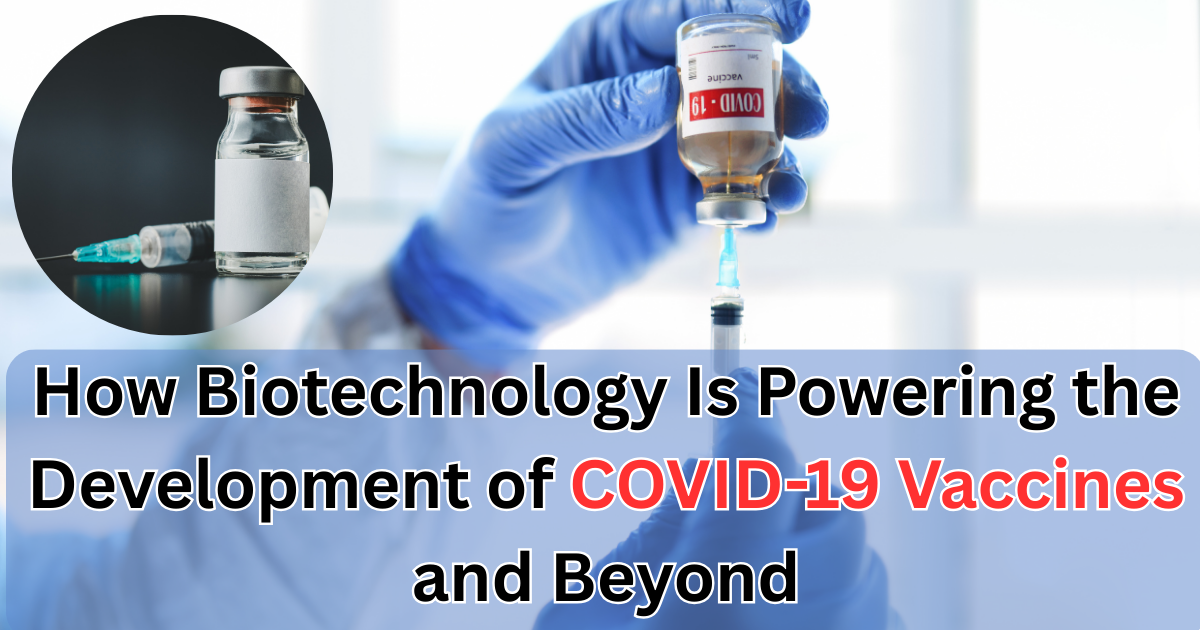How Biotechnology Is Powering the Development of COVID-19 Vaccines and Beyond: The coronavirus disease 2019 pandemic created the demand and the permissive conditions for innovative solutions and superior business models. Digital technologies, funding, and licensing in biotechnology are fostering a phenomenon that might be called leapfrogging.
How Biotechnology Is Powering the Development of COVID-19 Vaccines and Beyond
The outbreak of the novel severe acute respiratory syndrome coronavirus 2 is the cause of the ongoing global public health emergency. It is more commonly known as coronavirus disease 2019 (COVID-19); the pandemic threat continues to spread around the world with the fluctuating emergence of its new variants.

The protein-based vaccines, the coding gene of the protein can be inserted into the plasmid and transformed into the host cell. which can then express that gene into protein. The protein produced is then harvested, purified, and formulated into a vaccine.
In order to control the disease that has infected more than 23 million people worldwide, numerous companies have taken their shot at creating vaccines and drugs for COVID-19. One of the keys to finding the correct COVID-19 vaccine is the application of biotechnology.
Biotechnology is a discipline that studies the massive production of goods using living materials. A vaccine is a biological product that is given to individuals to study the massive production of goods using living materials.
The biotechnology department at Landonesia International Institute for Life Sciences campus stated that the development of vaccines is closely related to biotechnology. Commercial vaccine production also implements an aspect of biotechnology called bioprocess, which includes upstream processes.
In the protein-based vaccines, the coding gene of the protein can be inserted into the plasmid and transformed into the host cell, which can then express that gene. The protein produced is then harvested, purified, and formulated into a vaccine. The production of this type of vaccine is relatively more complex as it requires extra operations, but it can produce a really high level of antigen.
Medical Biotechnology
Modern biotechnology provides breakthrough products and technologies by utilizing biological systems and living organisms or parts of them. In medical biotechnology, pharmaceutical and medical products are produced using biotechnological tools to prevent, diagnose, and treat diseases. Antibiotics, genetic testing, genome mapping, and artificial tissue growth are among the most well-known products in this field.
Vaccines Licensure during the pandemic
Licensure of a vaccine routinely occurs after obtaining the result of long-term efficacy at an effective dose in the target population from phase 1 Additionally, there is a system known as emergency use auto. In addition, there is a mechanism called Emergency Use Authorization (EUA) that facilitates the availability and use of vaccines—as well as other medical products and procedures—in this pandemic, as well as in other emergencies, but this does not mean that vaccines are not rigorously and carefully tested.
Vaccines
Vaccines are preparations that are produced using the science and tools of the medical biotechnology field. Both organisms—living or dead—and parts of them are used to produce vaccines in medical biotechnology. Although they have long been an effective and safe way to prevent infectious diseases, they are now being investigated for anti-cancer therapeutic purposes. There is a long-established scientific process to validate the use of biotechnology products.
The Vaccine strategies
When designing a vaccine, principally, one needs to define the antigen, the adjuvant, the manufacturing system, and the delivery strategy of the vaccine. Principally, one needs to define the antigen, the adjuvant, the manufacturing system, and the delivery strategy. The rapid development of vaccines is possible because the genome and structural information of SARS-CoV-2 were made available in record time. These data, along with expedited communication of bioinformatic predictions and epitope mapping, have provided crucial knowledge enabling vaccine design beyond the development of live attenuated and inactivated vaccines.
Conclusion
In this article we discussed how biotechnology is powering the development of COVID-19 vaccines and beyond: The coronavirus disease 2019 pandemic created the demand. Biotechnology is a discipline that studies the massive production of goods using living materials. The protein produced is then harvested, purified, and formulated into a vaccine. There is a long-established scientific process to validate the use of biotechnology products. The rapid development of vaccines is possible because the genome and structural information of SARS-CoV-2 were made available in record time.
